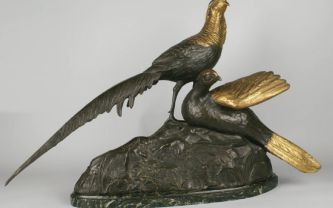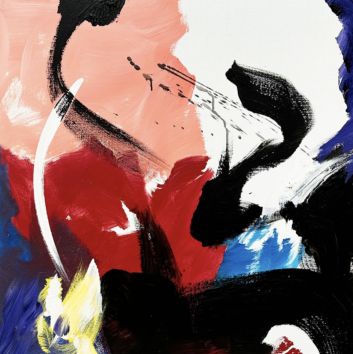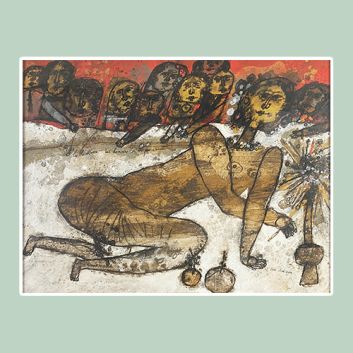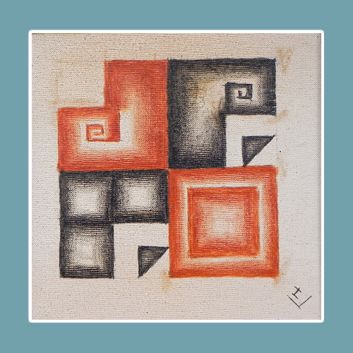Rating and value of paintings by Lovis Corinth

If you own a work by or based on the artist Lovis Corinth and would like to know its value, our state-approved experts and auctioneers can help you.
Our specialists will carry out a free appraisal of your work, and provide you with a precise estimate of its current market value.
Then, if you want to sell your work, we'll point you in the right direction to get the best possible price for it.
Artist's rating and value
Lovis Corinth's value on the art market is extremely high. His most prized works are his surrealist canvases, whether portraits or landscapes.
The artist is particularly prized among 20th-century German painters and draughtsmen. Works by Lovis Corinth sell for between €10 and €1,120,000 at auction.
His painting Walschensee, wish rising moon (oil on canvas), dating from 1922, sold for €1,120,000, against an estimate of €640,000 to €950,000.
Order of value from the most basic to the most prestigious
Technique used | Results |
|---|---|
Print - multiple | From €10 to €82,000 |
Drawing - watercolor | From €30 to €520,000 |
Oil on canvas | From €10 to €1,120,000 |
Secure site, anonymity preserved
State-approved auctioneer and expert
Free, certified estimates
Style and technique by Lovis Corinth
Lovis Corinth's style blends boldness and technical mastery, reflecting a fluid transition between academic naturalism and the expressive impulses of modern art.
Trained in the rigorous tradition of German fine art, Corinth initially adopted a detailed, realistic approach, marked by harmonious compositions and a precise treatment of light.
However, his work quickly evolved, incorporating freer, almost impulsive brushstrokes that foreshadowed Expressionism.
He excels in the art of portraiture, where he captures not only the physical features but also the psychological depth of his subjects, playing on subtle contrasts and vibrant textures.
His still lifes and genre scenes, rich in color and movement, testify to a mastery of the brush that combines energy and precision.
Influenced by Impressionism, he explores bold palettes and dynamic brushstrokes, infusing his compositions with an almost tactile vitality.
Corinth's technique relies on successive layers of paint, playing with thickness and transparency to create a striking visual depth.
After a stroke in 1911, his style became more spontaneous and intense, reflecting an emotional urgency and a more subjective vision.
Through this stylistic evolution, Lovis Corinth defies convention while remaining rooted in a solid pictorial tradition, asserting his role as a bridge between classical currents and modernist experimentation.


The life of Lovis Corinth
Lovis Corinth, born in 1858 in Tapiau, East Prussia, is one of the most significant German painters of the transition between the XIXᵉ and XXᵉ centuries.
The son of a tanner, he grew up in a modest environment, but showed an early gift for art. He first trained at the Königsberg Academy of Fine Arts, where he acquired a solid academic mastery.
Aspiring to new horizons, he moved to Munich, bastion of the German artistic avant-garde, before continuing his quest in Paris, at the Académie Julian.
It was here that he discovered Impressionism and the effervescence of the French artistic scene, influences that enriched his style without ever totally distracting him from his Germanic roots.
In 1901, Corinth moved to Berlin, where he became a leading figure of the Berlin Secession. Shortly afterwards, he married his student Charlotte Berend, who became both his muse and unwavering supporter.
But a tragic event in 1911 turned his career around: a stroke left him partially paralyzed.
Against all odds, he took up his brushes again, transforming this ordeal into a creative force. His works from this period, imbued with great emotional intensity, reveal an artist in search of depth and truth.
Until his death in 1925, Corinth remained true to his commitment to art, blending academicism with modern audacity. His career bears witness to a resolutely individual path, marked by a unique ability to sublimate life's challenges through painting.
Focus on The Sleeper, Lovis Corinth, 1911
In Le Dormeur (1911), Lovis Corinth achieves a striking fusion of light and shadow, capturing with rare intensity both the fragile beauty and vulnerability of the human body.
The touch, deliberately brutal and dynamic, not only suggests the texture of sleeping skin, but also accentuates the emotion that emanates from the scene.
The color palette, oscillating between warm and cool tones, harmoniously intertwines calm and agitation, creating a tension that can be seen in every corner of the painting.
This chromatic opposition seems a silent dialogue between the peace of the moment and the inner turbulence that disturbs sleep.
It's impossible not to see in this work an echo of Rembrandt's work, particularly in the treatment of light on the model's skin, which seems almost to pierce the canvas, giving the work an intimate, sacred dimension.
However, unlike the Dutch master, whose shadows often conveyed profound symbolism, Corinth uses them here not to suggest mystical introspection, but to underline the pure sensuality and fragility of the moment, playing with light to magnify form.
This bold approach breaks away from the conventions of his contemporaries such as Max Liebermann, whose light remains more diffused and soft, and introduces a more raw, almost dramatic realism that resonates with the turbulence of the times.
This work is a prelude to a form of pictorial modernity, in which the workmanship is devoid of artifice and imbued with the energy and raw truth of the world.
While drawing inspiration from classical traditions, Lovis Corinth manages to reinterpret these influences in a radical way, infusing a new, more expressive vitality devoid of all restraint.
The composition seems in constant evolution, a subtle movement where the canvas itself seems to vibrate under the tension of contrasts and the power of gesture.

The legacy of Lovis Corinth
Lovis Corinth's legacy is part of a pictorial evolution marked by a strong singularity, a quest for pure expression that frees itself from pre-existing aesthetic rules to embrace the raw force of matter and emotion.
His ability to fuse the Romantic impulse characteristic of his early work with a nascent modernism paved the way for new art forms in which the painter's unbridled passion is at the service of an uncompromising exploration of human intensity.
His influence is palpable in the work of many German artists of the early 20th century, notably those of the Expressionist movement, who, like Ernst Ludwig Kirchner or Emil Nolde, cultivated a freedom of gesture and a sense of pathos close to Corinth's, while pushing the expression of the inner self even further.
Where Corinth favored a balance between figuration and the elevation of light, his successors embraced a total abandonment of form in favor of color and distortion.
The painter also marked his era with his approach to light, which he treated as a dynamic, changing element, influencing not only Expressionist painters, but also some of his Impressionist contemporaries, who saw themselves in his use of light as a means of suggesting rather than defining.
Corinth's ability to transcend genres and techniques while remaining deeply rooted in the expression of human truth has established him as an essential point of passage between the last flashes of the 19th century and the creative power of the 20th.

Lovis Corinth's place in 20th-century German painting
In his quest for intense expression and visual power, Lovis Corinth positions himself as a bridge between the centuries, sweeping aside the boundaries of his era. He moves away from the academic use of painting while remaining rooted in classical forms.
Influenced by masters like Rembrandt, he adds a deeply emotional dimension to his compositions, where each brushstroke seems a cry, a burst of inner truth.
His portraits and nudes, which he treats with a boldness all his own, are imbued with the expressive brutality of artists such as Max Beckmann or Max Oppenheimerwithout, however, giving way to pure abstraction.
Like them, Corinth is inspired by human suffering, but his approach remains rooted in figurative realism, where the vital impulse seems to spring directly from the brush.
It's not a desire for radical innovation that guides his work, but a search for raw, sometimes acerbic truth, nourished by the tension between the brilliance of Impressionism and the audacity of Expressionism.
The result is visceral work, often bordering on violence, in which light, shadow and color are used to deconstruct the facade of everyday life.
It is this in-between, this refusal to submit to fashions, that allows Corinth to distinguish himself, both heir and precursor, between artists more radically turned towards abstraction, and those, like Emil Nolde or Georg Baselitzwho later embraced a darker, more politicized vision of society.
His signature
Although there are variations, here is a first example of its signature:

Appraising your property
If you happen to own a work by Lovis Corinth or after the artist, don't hesitate to ask for a free estimate by filling in our form on our website.
A member of our team of experts and certified auctioneers will contact you promptly to provide you with an estimate of the value of your work, as well as any relevant information about it.
If you're thinking of selling your work of art, our specialists can also help you find alternatives to sell it at the best possible price, taking into account the market's inclinations and specificities.
Response in less than 24h
Related topics

Rating and value of works, drawings, paintings by Marcel Bas...
Marcel Bascoulard is a self-taught, marginal painter and draughtsman of the 20th century, whose works are now highly prized at auction.
Read more >

Rating and value of sculptures and bronzes by Georges Lavroff
Georges Lavroff is a twentieth-century Russian animal sculptor whose works are highly prized at auction.
Read more >

Rating and value of paintings by Valerius d...
Valerius de Saedeleer is a Belgian Expressionist painter who produced works of high value. 24h estimate.
Read more >
Secure site, anonymity preserved
State-approved auctioneer and expert
Free, certified estimates





